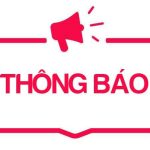Teaching and Learning Approach
The educational philosophy is well articulated and communicated to all stakeholders
The educational philosophy of NTTU is stated as follow: “Real Learning – Real Practice – Real Prestige – Real Career”. This philosophy is explained as, “the cognitive levels and competency of learners are formed through the academic environment created and connected with enterprises in research, applied research and community service activities. Also through these activities, learners formulate the desire to contribute to the community, plan for the future and form the entrepreneurship to create personal prestige with professionalism and ethics”. The university’s educational philosophy is communicated on the university website and on marketing materials.
The programme follows the philosophy of “Learning by Doing” which is developed through experiential learning model (Kolb, 1970, 1984). This model has four stages: (1) concrete experience, (2) observation and reflection, (3) forming abstract concepts, (4) testing in new situations.

Figure: Kolb’s Experiental Learning Model
The educational philosophy of the programme align with the NTTU’s educational phylosophy. The educational philosophy of the BFB programme and the Experiential Learning model (EL) are introduced in the Programme Specification, communicated on the website and the Student Handbook.
NTTU and FFA held workshops for lecturers to discuss the FFA’s educational philosophy and the EL model annually. Right from the orientation week, academics advisors of the programme introduces new students the educational viewpoint and philosophy of NTTU and the EL model of the programme.
Teaching and learning activities are constructively align to the achievement of the expected learning outcomes
The achievement of ELOs of students is the goal of the programme. Teaching and learning activities of the programme are designed to facilitate students learning toward ELOs in different ways. According to NTTU regulation, lecturers of FFA design teaching and learning activities as follows:
- Identify the contribution of the course to ELOs
- Transfer the requirements of ELOs into CELOs
- Identify the requirements of the CELOs
- Determine instructional goals
- Design the assessment techniques, test, assigments and other measures for student assessment.
- Design the intruction including teaching and learning activities and subjects.
- Design teaching and learning activities such as lecturers, case study, problem solving learning, cooparative learning, lab, e-learning etc.

Figure: The Scheme of Instructional Design toward ELOs (NTTU, 2014)
Teaching and learning activities of the programme are developed based on direct teaching, indirect teaching, interactive teaching, and work-based learning. Direct teaching is delivered through lectures, group discussion, problem solving, student presentation, case study, assigment, lab and others. Indirect teaching takes place in student project, field trip, internships and final projects. Interactive teaching with the help of technology create an ecology system for the interaction of student, lecturers, and student teams or student and computer (E-learning and Microbank simulation software). Work-based learning provide students with real work pratice. In adddition, final project requires students to perform all ELOs and assess all of these ELOs.
 Tel: 1900 2039 – Ext: 412
Tel: 1900 2039 – Ext: 412 Email: tckt@ntt.edu.vn
Email: tckt@ntt.edu.vn







